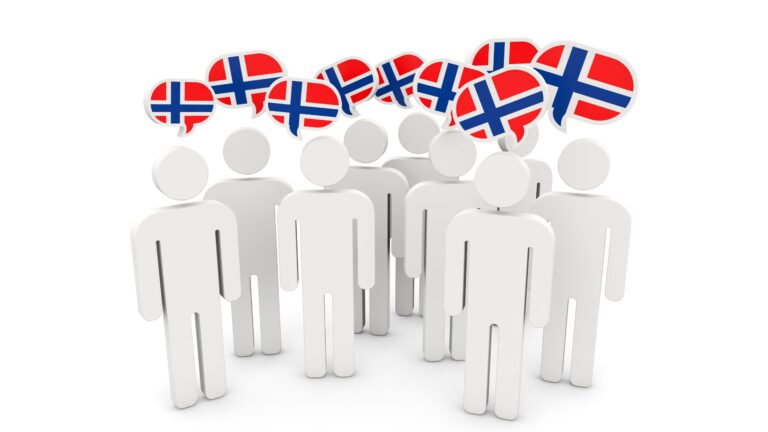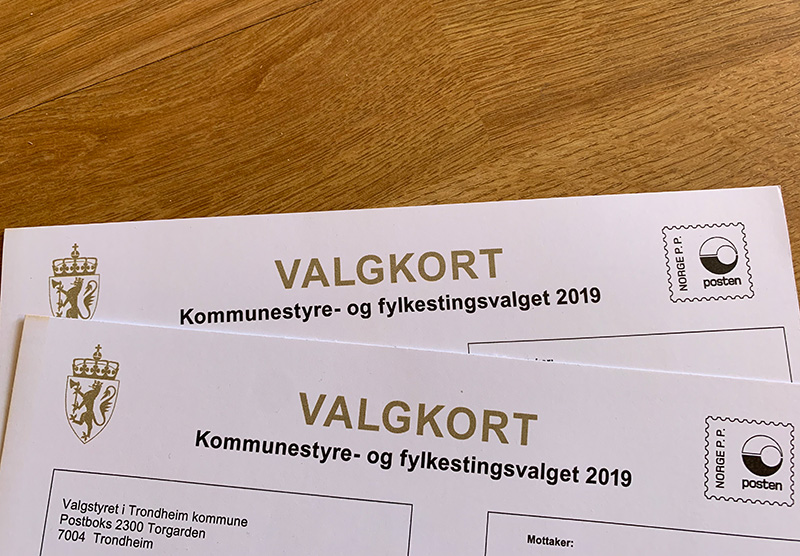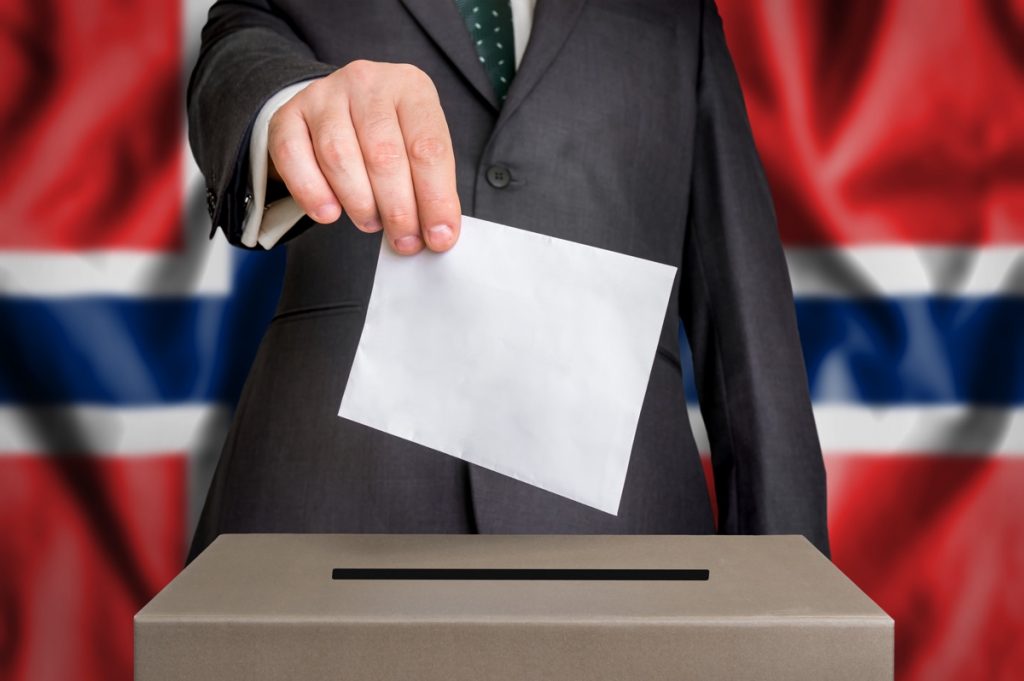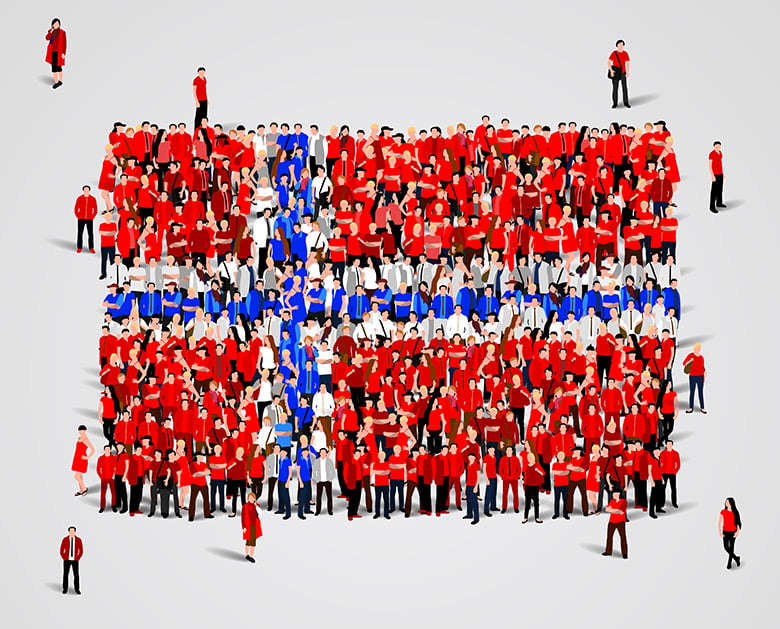You don't need to be a citizen of Norway to vote in the local elections. Generally, permanent residents are eligible to vote, regardless of your citizenship. Here's how voting works.
On 11 September 2023, Norway's population goes to the polls to elect its representatives at municipal and county level. As in many countries, these local elections are seen as an important barometer on national issues just as much as local politics.

Unlike national elections, for which only citizens can vote, many foreign residents of Norway have the right to vote in municipal and county elections. So if you've received a valgkort but have no idea what's going on, read on!
Who has the right to vote in Norway?
Whether you have the right to vote at a Norwegian election depends first and foremost on the type of election. National parliamentary elections are reserved for citizens only, but more people have the right to vote in the municipal and county elections.
To vote in the 2023 local and county elections, you must be 18 or turning 18 by the end of 2023, and be:
- A Norwegian citizen living in Norway.
- A Nordic citizen who registered as living in Norway before 30 June this year. This applies to citizens of Sweden, Denmark, Finland and Iceland
- A foreign citizen who has been living in Norway for at least three consecutive years before the date of the election
Everyone who is entitled to vote will receive a voting card (valgkort). This card contains details about the location of the polling stations on election day, and other information such as how to vote in advance.

Previously a physical card was sent in the mail, but this year they are being sent to digital mailboxes or via Altinn. A paper copy will still be sent to those without any digital accounts. But regardless, you do not need this card to vote.
Everyone entitled to vote should receive a voting card. There is no separate registration process like in the UK and some other countries. If you have not received one by mid-August, you can contact your home municipality to check your eligibility to vote.
As I said, you do not need to show the card to vote, although it does speed up the process. You will, however, need photo ID, such as a passport, national identity card, or driving license. Bank cards with photos are also accepted.
How and where to vote in the local elections
Election day is 11 September, 2023, and you will find your closest polling station listed on your valgkort. But it's also possible to vote in advance if it better suits your schedule.
In fact, during the advance voting period starting 10 August, you're able to vote in any Norwegian municipality. Your vote will then be posted to your home municipality for counting. If you're voting on election day, this must be done in your home municipality.
Generally, there will be limited places you can vote in advance. On election day, there will be a voting station near to your home. However, to vote in advance you're likely going to have to travel a little farther, although there will always be an option within your municipality.

For example, on election day there will be a voting station in my local community centre. But if I want to vote in advance, I will need to go to central Trondheim or a shopping mall to the south. You can find all the polling station locations here, including for advance voting.
Also, all Norwegian municipalities are required by law to allow voting in advance at health and social welfare institutions. For those with special requirements, it's possible to vote from home by prior arrangement.
I should also quickly point out that although I'm referring to municipal and county elections, things are a little different in Oslo. Because of the unique administrative status of the capital, there are city council elections and Oslo district elections there.
How Norwegian ballot papers work
Voting in Norway can be more complicated than you might be used to! It's certainly more flexible. In the UK, I was used to receiving a simple ballot paper with a list of names. I'd simply mark which person/party I wanted to vote for. Job done.
But in Norway, the electoral system is geared more towards proportional representation than single member constituencies, so the ballot paper looks a little different. First things first, there's not just one ballot paper!
When you enter the ballot booth, you'll be faced with a dazzling array of ballot papers! There will be one set of papers for the local election and one for the county election, identified by colour. Each set will contain a ballot paper for each party.
If you just want to vote for a specific ‘party list', you simply take the ballot paper of that party. You don't need to do anything else. However, Norwegian elections allow you to give some of your vote ‘power' to specific candidates only, and even to candidates from other parties.
To give a personal vote to specific candidates on the party list, you place a mark in the box next to their name(s).

For the local election, it's also possible to add candidates from other party lists. To do this, you write the name of the candidate(s) in the specified place on the ballot paper. If you do this, a proportion of your vote will then be transferred from the party ballot paper to that specific candidate.
Once you've made your decision, you fold the ballot paper. From the outside the ballots all look identical so there's no way to identify the party ballot you have selected.
You'll then be required to show photo ID to confirm your right to vote, and get a stamp from the election official, before placing your ballot papers in the ballot box. Getting the stamp is a crucial step, otherwise your vote will not be counted.
Who should I vote for?
Haha, good question! Norway's political parties can often take a different stance on local issues than national ones, so it's a good idea to follow the local newspapers to get a feel for the big issues at play in your local area.
Many Norwegian newspapers are running tools that help you decide who to vote for, such as this one at NRK, which is available in Bokmål, Nynorsk, and Sami.
For the next few weeks, most shopping streets will be graced with the presence of campaign tables from some or all of the parties contesting the election in your area. So if you want to find out more about a specific party, that's your best opportunity to have a chat.





Thanks for this. I was proud to receive my first Valgkort this week, and now i know a bit more about how to use it. cheers
Thank you for this Article. Got my Voting Card last week and was wondering if it was proportional representation or first past the post in Norwegian Elections. Can now vote without looking totally flummoxed in September.
It’s a proportional system.
At a local and county level it’s just a modified Sainte-Laguë method of converting votes into seats.
So non of the leveling seats and stuff used at a national level.
So to understand the formula you start with the idea of number of votes divided by number of seats already achieved and just see who has the highest number and give that seat to that party. (So if theoretical party 1 has 300 votes and 3 seats then you’d have 300/3=100 as a sum and your next seat might go to another party with 250 votes and 1 seat already or some such)
Trouble is just that if you don’t have a seat yet you’d be dividing with 0 seats, and dividing with 0 doesn’t work.
So you do number of votes divided with the number of seats a party has already achieved + 1
So in the 300 votes and 3 seats example above you’d do 300 votes / (3 seats +1 to ensure that it’s never divided with zero)
That leaves you with the d’hondts metode used in countries like Finland.
However that still don’t leave the number of seats a party has as a equal proportion to the number of votes they have instead favoring the bigger parties.
So Norway uses the Sainte-Laguë method where we multiply the number of seats you already have with 2 before adding the 1.
So 300/1 when you have 300 votes and no seats, then you divided with 2×1+1=3 for once you have your first seat, that is 2 x the seat you have + another one to ensure you don’t divide with zero for a 3 as a dividing number and so one and so forth.
The formula is V/(2xS+1) where V is the number of votes and S the number of seats.
This favors the smaller parties.
However it makes the first seat too easy to get.
So we ended up using a modified version of Sainte-Laguë method.
In essence, we divide the total number of votes with with 1.4 for the first seat giving the seat to the party with the biggest number after doing that division.
Then we divide with 3 once the first seat has been achieved and you’re calculating if a party qualifies for their second seat like normal Sainte-Laguë, then we divide with 5 when a party got 2 seats and is trying to get a third etc.
So 1.4, 3, 5, 7, 9, 11 etc…
What the division is used for is to see what party gets a seat.
So a seat isn’t given to the party with the highest total vote but the highest number after dividing their vote with the number above that corresponds with the number of seats they already have, so if 0 seats already then 1.4 and if 1 seats already then 3 and so one.
And that seat is given to the top person on that list of the party that has the highest number after dividing their voters on that number haven’t already been given a seat, unless changes has been made.
If you vote to change the order on a party list then you essentially vote to have that list reordered.
And if enough voters for a party makes a change then that will become the end result regardless of what the party leaders might have preferred when they made that list in the first place.
Meaning that if the three top spots in a list are people who are unpopular you can move up spot 4 and perhaps add a couple of people from other parties and if enough people in that party does the same thing as you then that person from another party or whatever will get that spot on that list and may get that seat if the list qualifies for a seat at that spot.
(That kind of gives us the option of electing individuals like in first past the post systems like the UK while still ensuring some degree of proportionality)
At a national level we add to the complexity a bit by doing the above at a county level to distribute the seats for a county to the parliament.
And then to correct the difference between that number and the the proportional popularity of a party at a national level there’s one extra seat pr county that’s reserved for the same calculation done at a national level, but only for parties with more then 4% of the voters supporting them (there’s no lower limit for the number of votes to get a seat in the parliament from a election circle directly)
Btw, if this was way, way, way too complicated then I’m sorry and I can try to answer questions or simplify things…
But basically don’t worry about tactical voting or your vote being “wasted”.
You can do something like using a questionnaire about what you care about that compare your answers with that of the various political parties to get an idea about what to vote for (or you can look at their party programs) and just vote for whatever you genuinely agree the most with.
And ignore all the details.
Thank you for the information. I also got my first valgkort. Is it compulsory to vote? Best regards
No, voting isn’t compulsory
I got my first Valgkort. Is there any likely positive outcome from casting my vote in future?
I’m not sure what you’re asking exactly?
In UK, electoral registration boosts an individual’s credit score. Anything of such happen here?
This is so helpful. I am voting in Norway for the first time tomorrow and now feel much more confident about the process.
Great to hear! “God valg” 🙂